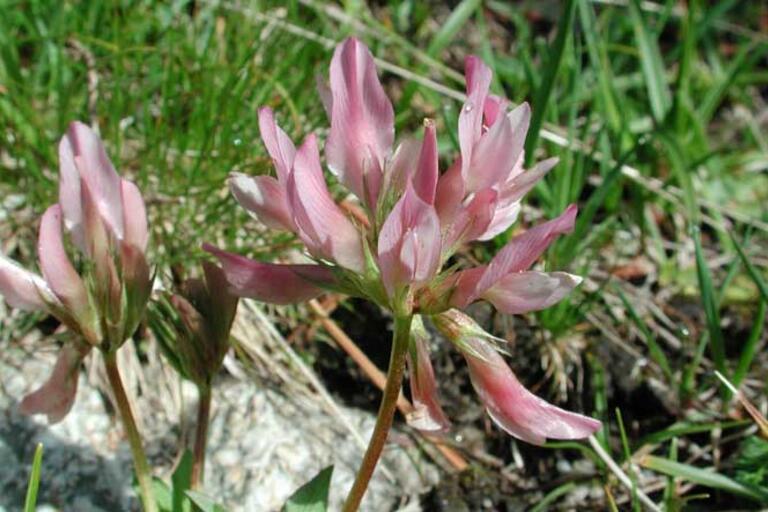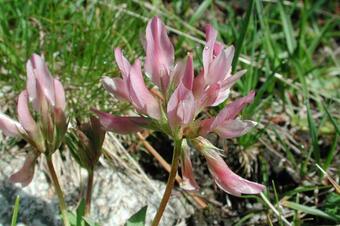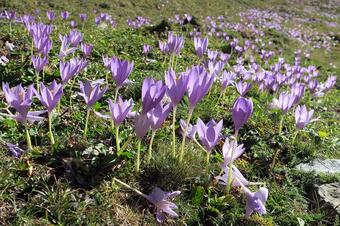
Introduction
When spring arrives in the mountains and the snow in the meadows melts, a mosaic of a thousand colors and shapes emerges, filling these habitats with life. The one responsible for this spectacular change in the landscape is subalpine flora.
Subalpine flora includes a wealth of species, of all sizes, shapes, and colors. We can find very large flowers like the yellow lily (Lilium pyrenaicum) or so small that they need to group together to be visible, as is the case with bistort (Polygonum bistorta) or gentians (ground-level blue trumpets).
Here we present two very common ones: the saffron crocus (Crocus nudiflorus) and the mountain clover (Trifolium alpinum) (fotos).
The saffron crocus is found up to an altitude of 2200 m, blooms in the fall (September-November) just after a good rain. It is extraordinarily cold-resistant, and it is not rare to see it in bloom amidst the first snow.
The mountain clover can grow at higher altitudes, up to 2800 m. The flower is about 2 centimeters, very aromatic, and located at the end of a floral peduncle about 10 centimeters long, with a color ranging from pink to purple, although sometimes they are cream or white. Its flowering period is in summer (June to August). The root is edible and has a sweet taste similar to clover.
It is in these meadows that we find fairy ring mushrooms, trooping fairy caps, or Scotch bonnets (Marasmius oreades), as well as morels in spring and some mushrooms. Have you seen how many common names the same mushroom can have???

